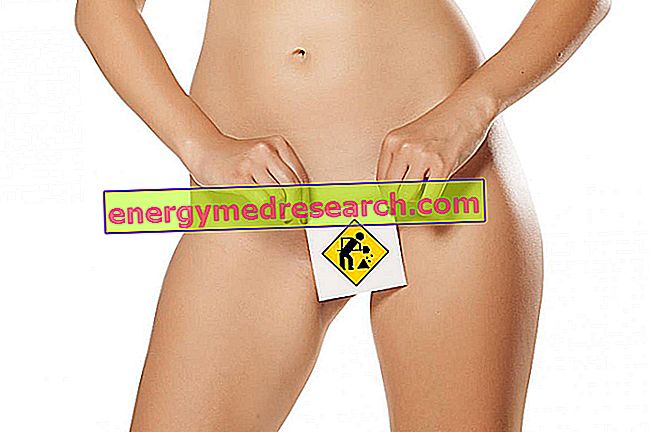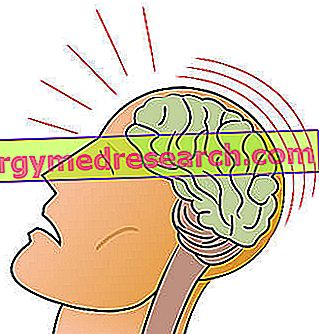Definition
"Gynecomastia" is defined as an abnormal development of breast tissue in the male, the result of an alteration in the synthesis of hormones estrogen and testosterone; in general, gynecomastia occurs in the child (pubertal variant) and in the elderly. Although it should not be considered a serious disease, gynecomastia can cause serious psychological disorders to the subject, who feels different from others, and embarrassed.
Causes
In most cases, the cause of gynecomastia lies in hormonal abnormalities: the decrease in serum testosterone levels and the increase in estrogen can increase the volume of one or both breasts. Beyond the hormonal factors, gynecomastia can be heavily influenced also by the administration of some drugs: anabolic drugs, anti-AIDS drugs, anti-androgens, anxiolytics (eg Diazepam), antibiotics, antiulcer, chemotherapy and digoxin.
- Risk factors: alcohol abuse, amphetamines, heroin, methadone, hypogonadism, advanced age, testicular cancer, kidney failure, malnutrition.
Symptoms
Gynecomastia manifests itself with an evident swelling of the breasts, associated with pain and secretion of milky substances from one or both nipples. To the touch, the abnormal breast is rather flaccid and evidently swollen.
- NB False gynecomastia occurs when the increase in breast volume depends exclusively on a localized lipid accumulation, in the absence of hormonal alteration or the administration of some pharmacological specialties.
Information on Gynecomastia - Drugs for the Treatment of Gynecomastia is not intended to replace the direct relationship between health professional and patient. Always consult your doctor and / or specialist before taking Ginecomastia - Gynecomastia Drugs.
drugs
Numerous cases of gynecomastia regress on their own, without the need to intervene with drugs or surgical treatments; however, if the condition is generated by a specific underlying cause - such as hypogonadism, malnutrition or cirrhosis - it is recommended to promptly intervene on the cause of origin. In the case in which the gynecomastia was due to the administration of medicinal specialties, it will be the duty of the physician to intervene modifying the treatment with a similar pharmacological substitute.
Normally, pubertal gynecomastia that manifests itself without any obvious cause is not treated with drugs: in fact, the boy is subjected to periodic clinical controls, very useful for monitoring the progression or regression of the disease. It should be remembered, in fact, that gynecomastia independent of pathologies or drugs tends to self-purify within a few months or a few years (max. 2) from its onset.
The pharmacological or surgical treatment is necessary both when the condition does not regress over time (within two years of its onset), and in the case of gynecomastia causing excessive pain or embarrassment.
Among the most used surgical treatments, we recall:
- Liposuction under local anesthesia
- Removal of the mammary gland (mastectomy)
The regression of gynecomastia can only take place in puberty: adult men and the elderly who experience this disorder will have to undergo pharmacological or surgical procedures to regress the condition.
The drugs used for the treatment of gynecomastia not dependent on secondary pathologies and not spontaneously reversible, are currently few: however, it seems that a treatment with tamoxifen and raloxifene - chemotherapeutic drugs with antiestrogenic activity used for the treatment of breast cancer - may, in some way, also alleviate the symptoms of gynecomastia. Although other drugs have been approved by the Food and Drug Administration, their therapeutic effect does not seem to be particularly beneficial for reversing the disease. Sometimes anastrozole is also used. Let's analyze them in more detail:
- Tamoxifen (eg. Nolvadex): the drug exerts its therapeutic action by interacting with the estrogen receptor: we briefly recall that serum testosterone levels in patients with gynecomastia are low, to the benefit of those of estrogen. Precisely to prevent the link between the receptor and estrogen, this drug is used in therapy for the treatment of gynecomastia (the active principle, by binding to the estrogen receptor, prevents the latter from carrying out its activity). The drug is available in 10 or 20 mg tablets; the dosage and duration of treatment must be established by the doctor.
- Raloxifene (eg Evista): the drug can be used for the treatment of pubertal gynecomastia, where the condition persists for over 2 years. Continue the therapy with this drug for 3-9 months, depending on the severity of the condition. It is a drug belonging to the class of selective estrogen receptor modulators (SERM); this drug seems to have a better therapeutic effect to alleviate the signs and symptoms that distinguish gynecomastia. For the dosage: consult a doctor (a drug generally available in 60 mg tablets).
- Anastrozole (eg. Arimidex): it is an aromatase inhibitor, an enzyme involved in the conversion of testosterone (the male sex hormone par excellence) to estradiol (the most important human estrogen ever). Starting from this assumption, the drug is also used for the treatment of disorders such as gynecomastia, precisely because it prevents the side effects associated with the superproduction of estrogens. For the dosage: consult a doctor.
The correction of eating habits is essential when gynecomastia depends on an accumulation of lipids in the breast tissue: localized fat and muscle relaxation are, in this case, the predisposing elements; therefore it is recommended to follow a hypocaloric diet, consume a lot of fiber, limit the consumption of meat and practice constant physical exercise, a species aimed at muscle toning.



